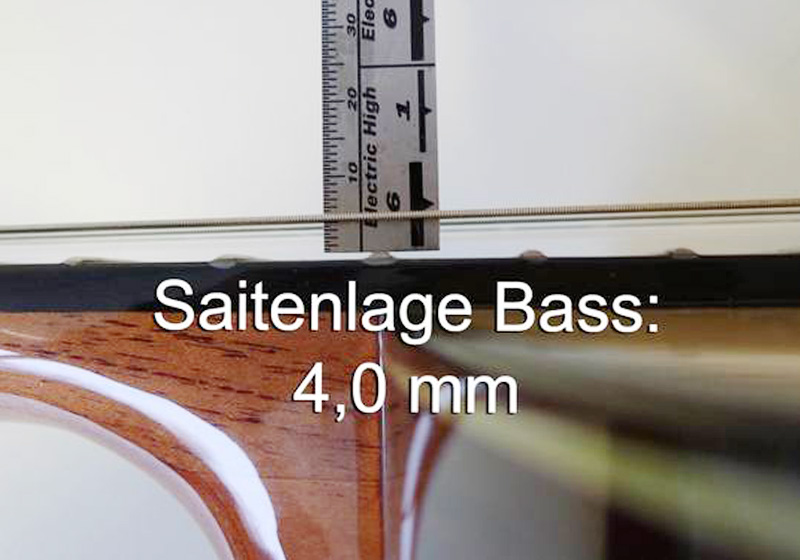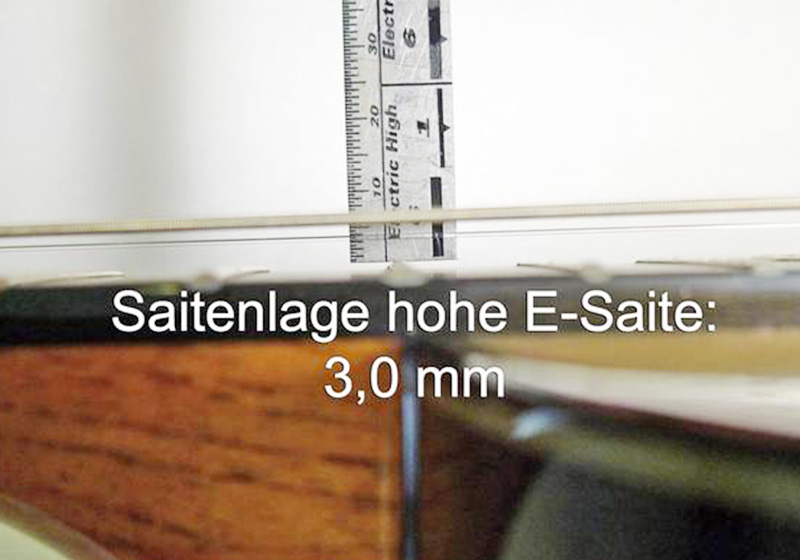Which string action is the right one?
The action is the distance between the guitar string and the fret bar, measured at the 12th fret and is set up by the height of the nut. If the nut is too high, it can be ground down or replaced with a lower-profile piece. If it is too low, a higher nut can be substituted. The distance between the string and the frets on classical guitars should be 3 mm for the high E-string (E1) and 3.5 to 4 mm for the low E-string (E2). The millimeter values are to be understood as guidelines.
String action on flamenco guitars
For flamenco guitars, the default string action setting is 1 mm lower than for classical guitars. This is due to the fact that Flamenco guitarists often play much more quickly and dynamically, and require a much more responsive instrument.
String action too high or too low?
Always a compromise
The action can, of course, be adjusted to the wishes of each guitar player individually. If your action it too high, grasping chords can be tiresome and frustrating, and the natural bending of the strings can cause problems with intonation. If the action is too low, the strings may vibrate against the fretboard or other frets and create dull, buzzing tones. Temperature fluctuations in conjunction with string tension can cause the action to change dramatically. For example, when it is warm and the humidity is very high, the wood expands. If the air in the room is dry or the temperature is low, the wood will contract.


String action isn’t the only important factor
The classical guitar has a thinner top in relation to the acoustic guitar, since less tension is exerted by the nylon strings. But that doesn’t mean that the instrument doesn’t require the same of attention when it develops string “buzz”. This can be caused not only by the action, but also by the neck relief, the height of the strings at the nut, the fret work and the individual picking as well.